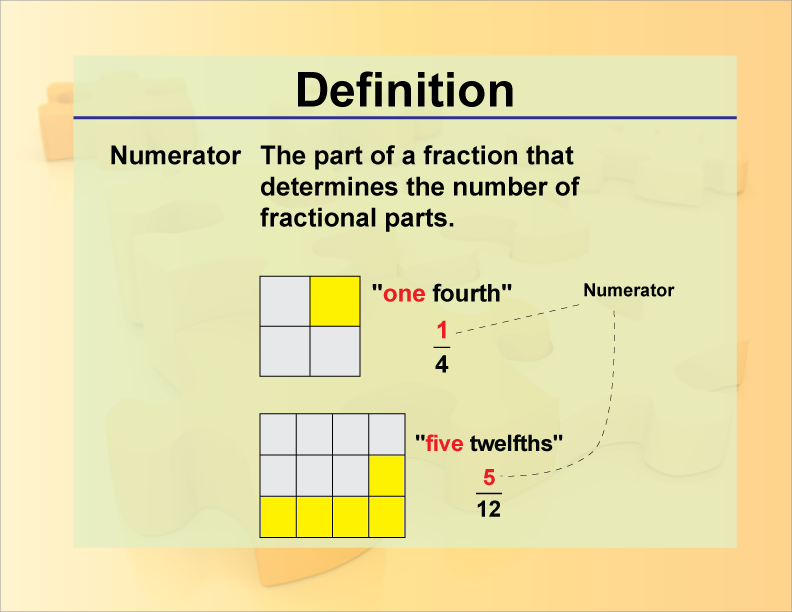
Display Title
Definition--Fraction Concepts--Numerator
Display Title
Definition--Fraction Concepts--Numerator

Topic
Fractions
Definition
The numerator is the top number in a fraction, representing the number of parts being considered out of the whole.
Description
In the realm of fractions, the numerator plays a crucial role. It is the number above the fraction bar, indicating how many parts of the whole are being counted. For instance, in the fraction 3/4, the numerator is 3, which means three parts out of a total of four parts are being considered. Understanding the numerator is fundamental to grasping the concept of fractions, as it directly affects the value and representation of the fraction.
Fractions are a way to represent parts of a whole, and the numerator specifically tells us how many parts we have. This is particularly important in various mathematical operations involving fractions, such as addition, subtraction, multiplication, and division. For example, when adding fractions, the numerators are added together, provided the denominators are the same. In real-world applications, numerators can represent anything from slices of a pizza to portions of a budget, making them a versatile and essential component of mathematical literacy.
For a complete collection of terms related to fractions click on this link: Fractions Collection.
| Common Core Standards | CCSS.MATH.CONTENT.3.NF.A.1 |
|---|---|
| Grade Range | 3 - 6 |
| Curriculum Nodes |
Arithmetic • Fractions • Fractions and Mixed Numbers |
| Copyright Year | 2021 |
| Keywords | fraction, numerator, denominator |